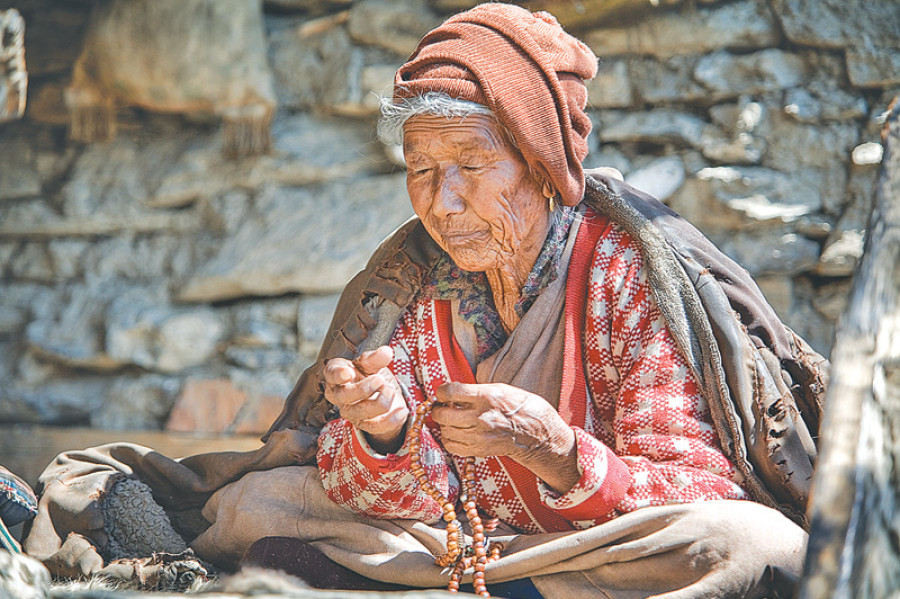Miscellaneous
Beyond blindness
Even as Maiya (name changed), a 65-year-old lady from a remote village in Pyuthan, was just entering the clinic, I could already tell that her vision was completely lost. Next to her was her husband, holding her arms, and guiding her towards the examination table.
Dr Araniko Pandey
Even as Maiya (name changed), a 65-year-old lady from a remote village in Pyuthan, was just entering the clinic, I could already tell that her vision was completely lost. Next to her was her husband, holding her arms, and guiding her towards the examination table.
I asked her to be seated for the interview and the eye examination. Looking at her, I started making spontaneous diagnoses inside my head. Perhaps, she had a mature cataract—the most common cause of blindness at her age—in both her eyes. She might also have had diseases in the cornea or retinopathies due to diabetes or hypertension. Either way, it could be cured.
Unfortunately, in no time, her charts revealed that her visual status was NPL: No Perception to Light, which meant she could not even detect light. On examination, her retina revealed signs of Retinitis Pigmentosa (RP), a disease that has no cure. It was much more serious than what I had imagined.
Her husband, who stood right beside me, looked at me in search of a positive response after the diagnosis. I quickly turned towards Maiya to find her eyes staring into void, but her ears obliquely turned towards me —waiting for instructions to follow.
Before I disclosed the results, I made small talk to understand the patient’s background. I would go on to learn that Maiya’s husband was a cobbler in a village and mended shoes for living. They had three children together; two boys and one girl, all in their teens. School dropouts, their children crossed the border to India every now and then to work and earn as manual labours. The fact that they had an already difficult life did not make it any easier for me to tell them the truth about Maiya’s condition.
It broke my heart to disclose to them that their situation was not getting any better. It broke my heart to tell the couple that they had traveled all the way from Pyuthan on a local bus along a bumpy, dangerous road, for a day, hoping against hope, in vain.
This is just one example among others where I regularly find myself in such a tragic position.
Even as research is being carried out across the world and huge investments are being made into finding cures for incurable diseases; I am here, in a developing country, asking where the science of rehabilitation stands. What might be the support system that lies beyond blindness? What options do people like Maiya have to beat their stifling situation?
Are there institutions with established vision rehabilitation departments where I could refer my rural patients to? Are there institutions that train rural people who are already blind at a very young age? Shouldn’t there be a vision rehabilitation centre and a full time vision rehabilitation therapist in every eye-care centre and tertiary-level hospital?
Sure, there are well established palliative clinics, wellness centres, psychosocial counseling clinics and alternative therapy units that are working coherently with multidisciplinary hospitals with the respective fields of medicine. These extended services provide a more holistic care in management of urban patients, but what about patients like Maiya?
In a country where blindness is seen as a social and economic problem more than just a physical impairment; the visually impaired like Maiya, are isolated and marginalised. Their limited mobility makes them totally dependent; excluding them from opportunities for education and employment. It is such a shame that a physical disability so easily isolates and stifles a patient.
This is a serious problem that seeks immediate solution. We need adequate sustainable eye care and rehabilitation infrastructures, as well as sufficient human resources that enable accessible and affordable services for the rural population. It is my hope that related stakeholders take it into consideration and recognise this issue as one that warrants attention. A physical disability, in this day and age, should no longer continue to isolate an individual.
Dr Pandey is an ophthalmologist practicing in Lumbini Eye Institute, Bhairahawa, Nepal




 9.12°C Kathmandu
9.12°C Kathmandu










